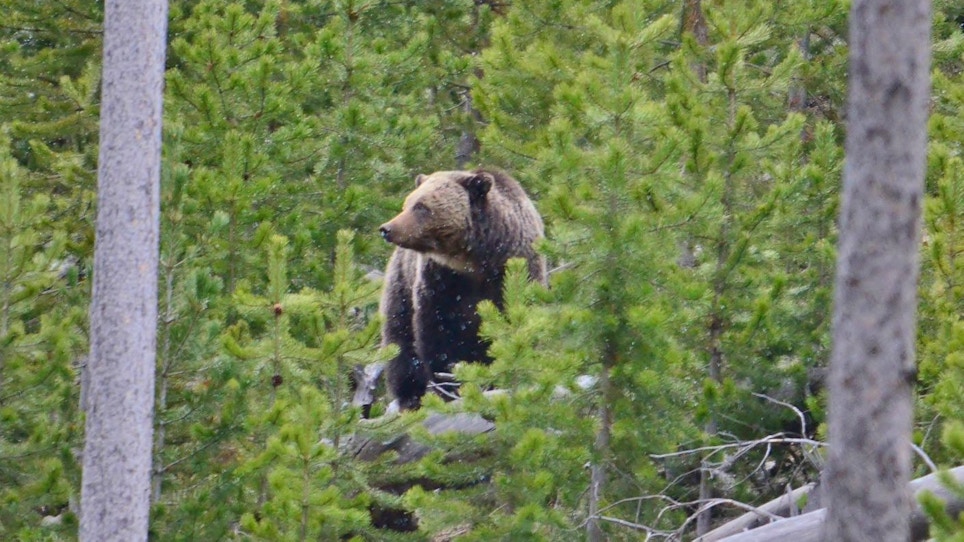Are you happy now, animal rights kooks? On Sept. 25, 2018, just 11 days after hunting guide Mark Uptain was killed in an unprovoked grizzly attack in the Teton Wilderness, U.S. District Judge Dana Christiansen ruled that grizzly bears living in the Yellowstone ecosystem be returned to the Endangered Species List (ESL). When he ordered that the first authorized grizzly hunt since the bears were protected more than 40 years ago be delayed a few days before this final ruling, Christiansen wrote in his order, “The threat of death to individual bears posed by the scheduled hunts [in Wyoming and Idaho] is sufficient” to justify a delay in the state’s hunting seasons.
The threats posed by grizzlies to people legally recreating and working in the area apparently deserved no consideration. Nor did the fact that state wildlife agencies and sportsman’s groups have for decades bent over backward to support grizzly bear recovery efforts, work that has been so successful that the region’s population has gone from just 136 bears 30 years ago to estimates of 700 today — well above the baseline set for them to be taken off the ESL, where they have been since 1975, and where they could be managed like other wildlife.
Are you happy now, Tim Preso? Preso was the lead attorney for the radical environmental law firm EarthJustice when they sued to have the 2018 hunt stopped. Did you talk with other grizzly assault victims like John Sheets? Hunting guide Sheets was field dressing a cow elk in the Washakie Wilderness in October 2017, when his female client was mauled by a grizzly. Sheets grabbed the bear by the neck and stabbed it with his hunting knife, which in turn set the bear upon him. He ended up with a broken leg and a chewed-up ear, and she was injured badly as well, but both survived.
Are you happy now, Humane Society of the United States (HSUS), PETA, Center for Biological Diversity, Alliance for the Wild Rockies and all you other nutjobs who advocated for the bear hunt to be stopped? If you think this means the region’s grizzlies won’t be killed, think again. Last year Wyoming killed at least 14 grizzlies that attacked livestock or seriously threatened people. Hunters also killed nine more in self-defense, and one was killed by a vehicle. Another 21 were killed in 2015 and 22 in 2016. And the sow and her cub that killed Uptain were killed by state officials shortly after the attack.
Are you happy now, Jane Goodall, photographer Tom Mangelsen, and you other 7,000 people that applied for grizzly tags but proudly said you would “shoot with a camera, not a gun” because it would be a travesty to hunt them? Or are you simply against hunting, period? As Goodall said, “We should not be killing any animals for fun. We should be celebrating grizzlies being alive and not rushing to shoot them.”
In 1990, I was in a California courtroom when a judge ended mountain lion hunting forever in that state. There, I spoke with Wayne Pacelle, the future CEO of HSUS. He told me one of the ways his ilk would stop all hunting in the Yellowstone region was to introduce endangered wolves and grizzly bears, where they would be protected and eat the majority of the deer and elk. I thought he was smoking crack. Turns out he was prophetic. Since those predators were reintroduced to the area, big game numbers have plummeted and, thus, available hunting tags severely reduced.
I have spent decades in close proximity to both grizzlies and their big brother, the Alaska brown bear. I can tell you for a fact that bears that have been hunted and treated aggressively by people act far differently than protected bears that believe — rightly so, apparently — that they are on the top of the food chain. Bears encountered where they are hunted, by and large, have a healthy fear of humans. Protected park bears do not. While all can be extremely dangerous, there’s no doubt which subgroup I fear most.
Carry bear spray, the animal rightist’s say. Tell that to Mark Uptain’s widow and five children. He apparently emptied a can of bear spray into the face of the sow that killed him, and it didn’t work. And with grizzlies continuing to expand their range far outside park boundaries and the established “recovery zone,” you can bet the house there will be more and more bear/human conflicts that result in grizzly deaths. There isn’t anyone hunting this area who doesn’t constantly look over his or her shoulder worrying they might be next.
Another hard truth is that the population of the United States will continue to grow and expand into wildland areas. Problem bears will continue to be killed by government employees at great cost to the taxpayer. Having a hunting season that helps keep the bear population in balance — think the North American Wildlife Conservation model, the most successful of its kind in history — would instead generate much needed revenue for state wildlife departments, agencies that have seen steep budget declines as the sale of expensive nonresident hunting licenses and tags keeps falling in no small part because deer and elk numbers are declining in many areas. And animal rightists, backpackers, hikers and other non-consumptive users pay … nada.
What’s your take? Email me at editor@grandviewoutdoors.com and let me know. I’d love to hear from you.






